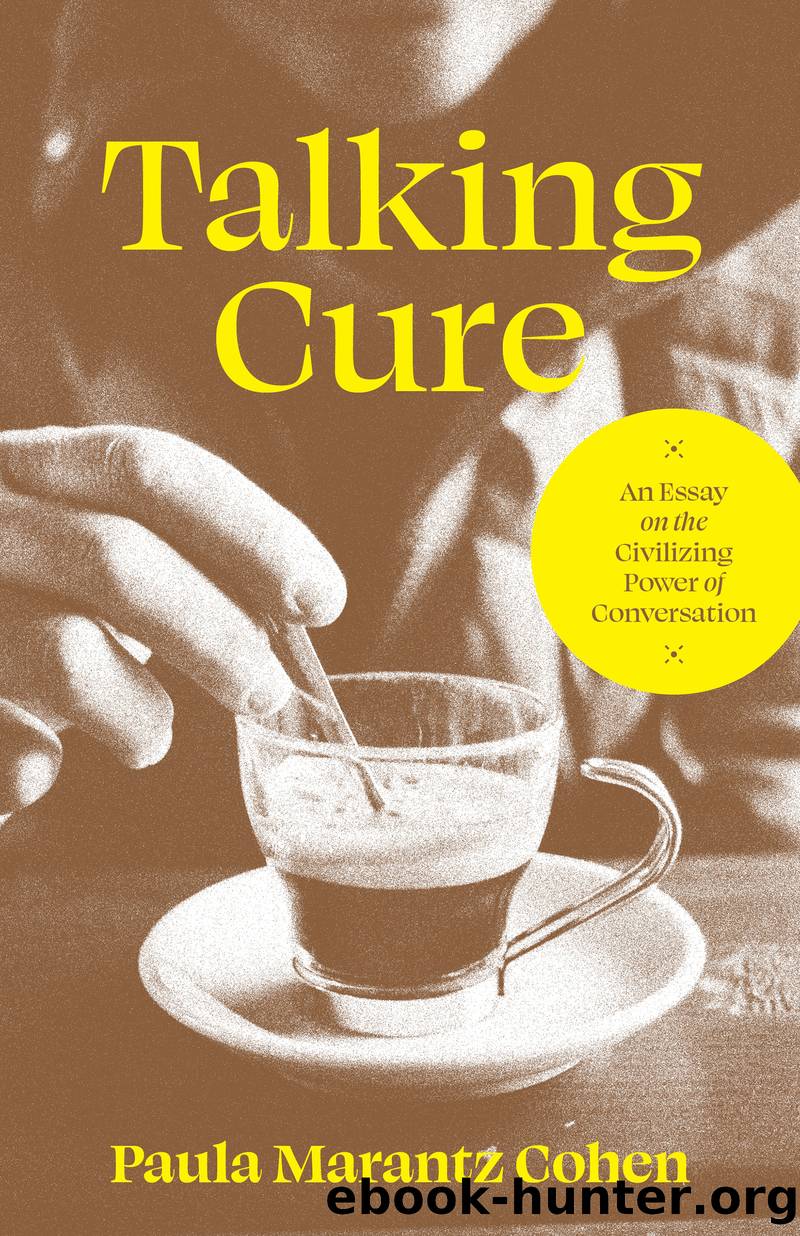Talking Cure by Paula Marantz Cohen

Author:Paula Marantz Cohen
Language: eng
Format: epub
Publisher: Princeton University Press
Published: 2022-12-09T00:00:00+00:00
Conversation among Minority Americans in the United States
Paris would also attract African American artists during this period, most notably Countee Cullen, Claude McKay, Alain Locke, and Langston Hughes. These writers spent time in France with the expatriate group above but are more associated with the so-called Harlem Renaissance back home. For many Black artists and intellectuals, Harlem came to occupy the same kind of perch on American society that Paris did.
The neighborhood in Upper Manhattan known as Harlem was initially a white middle-class enclave but opened to Black residents when developers realized that it had been overbuilt in the teens and 1920s. As a result, restrictions that existed elsewhere in the city were lifted and it became, in the words of Black writer and activist James Weldon Johnson, âthe Negro capital of the world.â It was the headquarters of the NAACP, the National Urban League, and Marcus Garveyâs United Negro Improvement Association, and of newspapers and magazines specifically geared to a Black audience. The level of artistic activity in Harlem in the 1920s was spectacular. The Harlem YMCA (still in existence near the 135th Street subway station) was where the Harlem Writersâ Workshop met and where figures like Langston Hughes and Claude McKay gave lectures to large and enthusiastic audiences. It was also where less prominent figures lodged and engaged in conversation.
Some say the Harlem Renaissance was launched by a dinner on March 21, 1924âmore of an immortal one than that hosted by Haydon for Wordsworth in 1817. It was called the Civic Club Dinner, organized by sociologist and civil rights activist Charles Johnson and designed to bring white and Black writers together. The guest list was impressive and included such prominent white figures as the gadfly journalist H. L. Mencken, the businessman-turned-art-collector of Impressionist and African art Albert Barnes, and the playwright Eugene OâNeill. Among the Black intelligentsia present were W. E. B. Du Bois, Countee Cullen, Gwendolyn Bennett, Walter White, and Alain Locke. Some say that the conversation at the Civic Club Dinner was an impetus for the flowering of creativity that followed; others saw the dinner as evidence that the movement was beholdenâand hence, inhibitedâby white patronage. This continues to be a subject of debate.
Langston Hughes, in his memoir The Big Sea, talks about the parties at white patron Carl Van Vechtenâs apartment that âwere so Negro that they were reported as a matter of course in the colored society columns, just as though they occurred in Harlem instead of West 55th Street.â Hughes reports some incidents that occurred and bon mots exchanged (Van Vechten once held a âgossip partyâ in which guests were expected to tell the worst things they had heard about each other). In general, Hughes was quite comfortable in this milieu and wrote about Van Vechten appreciatively: âHe never talks grandiloquently about democracy or Americanism. Nor makes fetish of those qualities. But he lives them with sincerityâand humor.â
But this was far from everyoneâs viewpoint. One of the more biting representations of the Harlem
Download
This site does not store any files on its server. We only index and link to content provided by other sites. Please contact the content providers to delete copyright contents if any and email us, we'll remove relevant links or contents immediately.
The remains of the day by Kazuo Ishiguro(8403)
Tools of Titans by Timothy Ferriss(7823)
Giovanni's Room by James Baldwin(6818)
The Black Swan by Nassim Nicholas Taleb(6773)
Inner Engineering: A Yogi's Guide to Joy by Sadhguru(6446)
The Way of Zen by Alan W. Watts(6291)
Asking the Right Questions: A Guide to Critical Thinking by M. Neil Browne & Stuart M. Keeley(5360)
The Power of Now: A Guide to Spiritual Enlightenment by Eckhart Tolle(5344)
The Six Wives Of Henry VIII (WOMEN IN HISTORY) by Fraser Antonia(5241)
Astrophysics for People in a Hurry by Neil DeGrasse Tyson(5004)
12 Rules for Life by Jordan B. Peterson(4166)
Housekeeping by Marilynne Robinson(4070)
The Ethical Slut by Janet W. Hardy(4042)
Skin in the Game by Nassim Nicholas Taleb(3973)
Double Down (Diary of a Wimpy Kid Book 11) by Jeff Kinney(3934)
Ikigai by Héctor García & Francesc Miralles(3900)
The Art of Happiness by The Dalai Lama(3851)
Skin in the Game: Hidden Asymmetries in Daily Life by Nassim Nicholas Taleb(3731)
Walking by Henry David Thoreau(3685)
